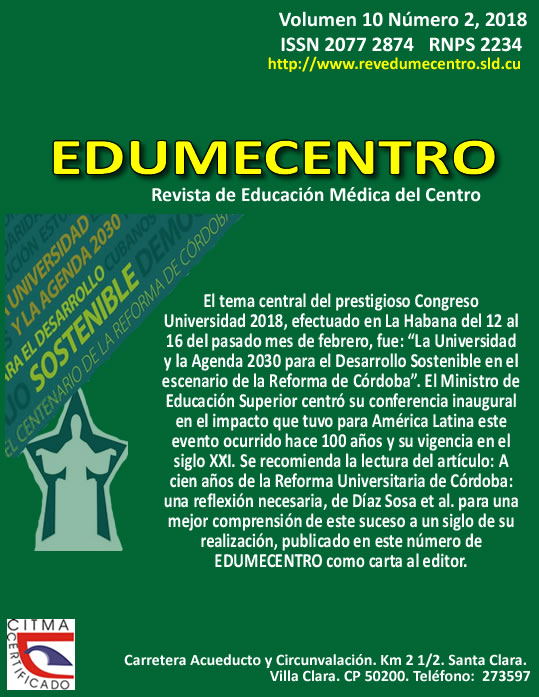Learning resources: a necessary approximation to their use in medical training
Keywords:
teaching, teaching materials, information technologies and communication projects, education, medicalAbstract
Background: learning resources are important components of the teaching-learning process that favor a scientific conception of the world and the assimilation of knowledge.
Objective: to assess the use of traditional teaching and learning aids and those created by educational technologies in the training of medical students at Pinar del Río University of Medical Sciences.
Methods: a descriptive, essentially qualitative study was carried out in the Medicine career of Pinar del Río University of Medical Sciences, from January to April 2015; for this, theoretical, empirical and statistical methods based on the materialist-dialectical method were used for its possibility to integrate the qualitative and quantitative approaches.
Results: the most used teaching and learning aids were the traditional ones, with emphasis on the blackboard and the textbook; the computer products designed in the institution were considered effective, which aroused interest and motivation in the students. All of them affirmed their usefulness for their training and the need to design new aids.
Conclusions: the necessary use of educational technologies in the design of teaching and learning aids enable the educational process to develop more effectively, and positively influence the scientific-technical quality of medical students, without replacing the traditional ones, whose value has been proven by innumerable generations of students and teachers.
Downloads
Published
How to Cite
Issue
Section
License
Los autores que publican en esta revista están de acuerdo con los siguientes términos:- Los autores/as conservarán sus derechos de autor y ceden a la revista el derecho de primera publicación de su obra, el cuál estará simultáneamente sujeto a una Licencia Creative Commons Reconocimiento-NoComercial-CompartirIgual 4.0 Internacional (CC BY-NC-SA 4.0) que permite a terceros compartir la obra siempre que se indique su autor y su primera publicación esta revista.
- Los autores pueden establecer por separado acuerdos adicionales para la distribución no exclusiva de la versión de la obra publicada en la revista (por ejemplo, situarlo en un repositorio institucional o publicarlo en un libro), con un reconocimiento de su publicación inicial en esta revista.
- Se permite y se anima a los autores a difundir sus trabajos electrónicamente (por ejemplo, en repositorios institucionales o en su propio sitio web) antes y durante el proceso de envío, ya que puede dar lugar a intercambios productivos, así como a una citación más temprana y mayor de los trabajos publicados (Véase The Effect of Open Access) (en inglés).







